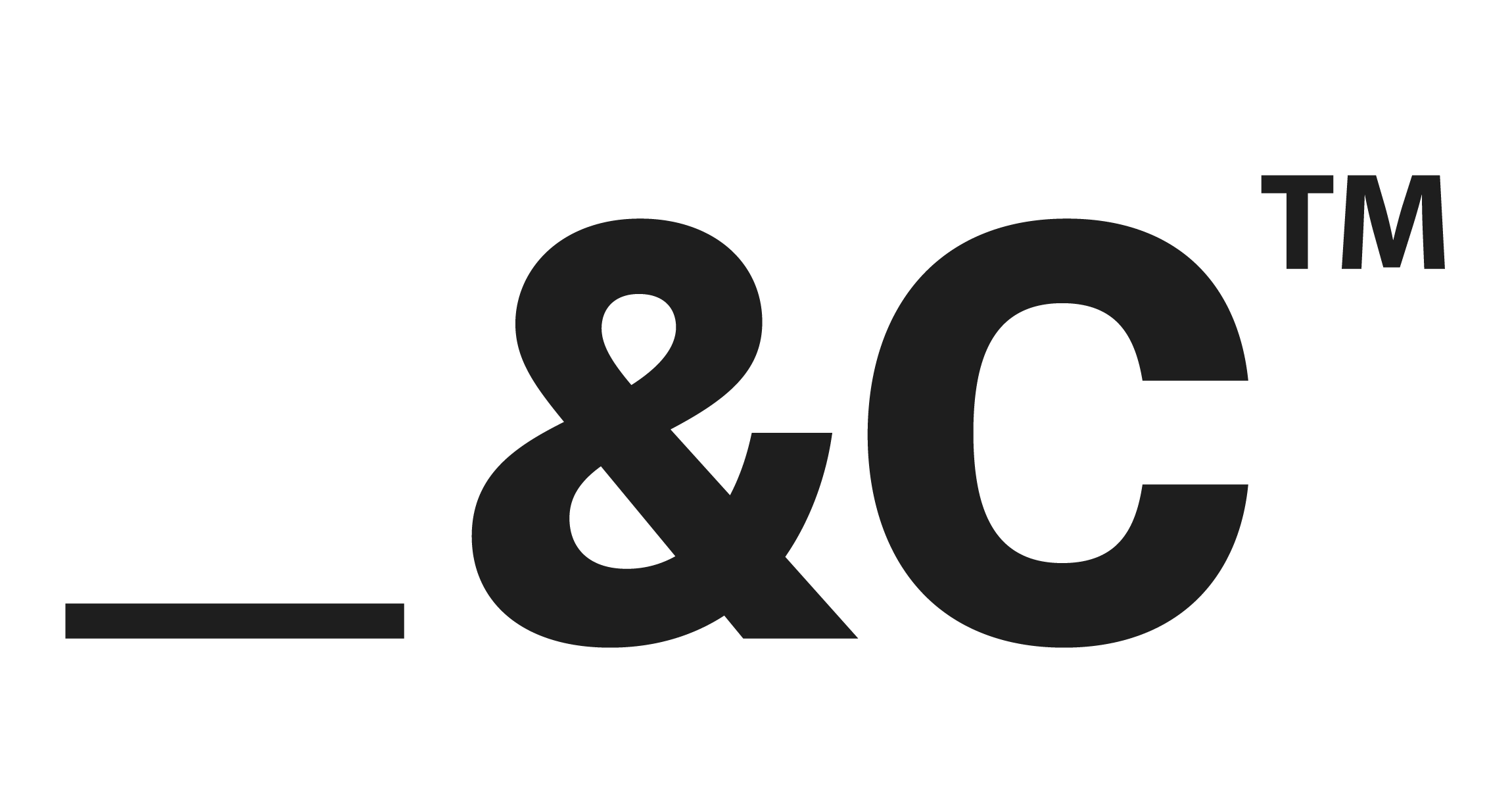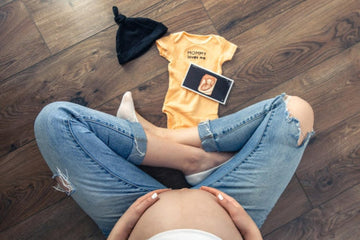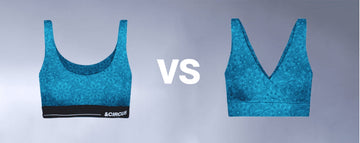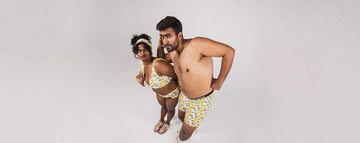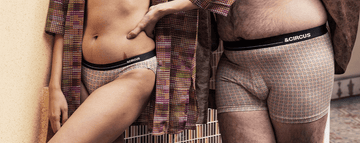Picture this: You're weaving through the bustling markets of Bengaluru, the air thick with the scent of rain-soaked earth, your body adapting to the profound changes of pregnancy. What you need isn't just any outfit it's something that moves with you, supports you, and reflects your style without compromise. This quest for perfect maternity wear is driving a revolution in India, where tradition meets modernity in the wardrobes of expectant mothers.
Uncomfortable underwear shouldn't steal your confidence. At Andcircus, we craft ultra-soft, sustainable Lenzing Modal Micro® innerwear for every body, XS to 5XL. From briefs to bras, our custom packs fit you perfectly. Shop risk-free with our 100% satisfaction guarantee and embrace comfort that includes everyone. #LoveEveryBody. Shop Now!
Addressing Comfort, Functionality, and Cultural Expectations in India
Designers across key hubs like Maharashtra, Karnataka, and Delhi are reimagining maternity clothing, striking a delicate balance between aesthetic appeal, practical support, and inclusive designs tailored for today's diverse mothers. The global maternity wear market, as detailed in a comprehensive report from Grand View Research an ISO 9001:2015 and 27001:2022 certified organization committed to GDPR and CCPA compliance, ensuring secure handling of data highlights a sector valued at USD 23,422.6 million in 2024, poised to expand to USD 30,867.5 million by 2030 at a compound annual growth rate (CAGR) of 4.7% from 2025 to 2030. India's contribution to this growth is particularly dynamic, with import shipments in the maternity wear segment surging at a CAGR of 46.8% from 2020 to 2024, including a remarkable 32.4% jump between 2023 and 2024. These figures underscore the pressing demand for innovative solutions that navigate real-world obstacles while honoring India's rich cultural tapestry.
This evolution isn't merely about numbers; it's rooted in the lived experiences of women navigating pregnancy in a rapidly urbanizing nation. As more women enter the workforce and delay starting families, the need for versatile, durable maternity apparel has intensified. Brands are responding by prioritizing materials and designs that cater to varying body types and lifestyles, ensuring that comfort doesn't come at the expense of confidence.
Why Maternity Apparel Design Matters in India
In India, maternity wear transcends fashion it's a vital adaptation to shifting societal norms and daily realities. Major urban centers such as Delhi, Bengaluru in Karnataka, and Mumbai in Maharashtra are at the forefront of this surge, propelled by escalating disposable incomes and the ubiquity of e-commerce platforms. Expectant mothers are remaining professionally active well into their third trimesters, balancing demanding careers with family responsibilities, which heightens the requirement for clothing that adjusts effortlessly to bodily changes.
Enterprising brands like AndCircus are leading the charge, particularly in the intimate wear category, with distinctive features that distinguish them in a crowded market. Their signature fabric mixes deliver exceptional breathability and elasticity, ideally suited to India's multifaceted climates from the intense humidity of Tamil Nadu to the milder terrains of Kerala. Complementing this are gender-agnostic patterns that resonate with progressive, inclusive sensibilities, alongside straightforward constructions that emphasize simplicity and user-friendliness. This approach is striking a chord with contemporary parents who seek more than basic functionality.
Contextualizing this further, the Asia Pacific region, encompassing India, is slated for the swiftest expansion globally, with a projected CAGR of 5.5% throughout the forecast period. Domestic catalysts include heightened consciousness around maternity fashion, accelerating urbanization, and a cultural shift toward prioritizing maternal well-being amid traditional expectations. Yet, challenges persist, as women often grapple with societal pressures to maintain modesty while embracing modern comforts.
Moreover, the market's growth is intertwined with broader economic trends. Rising female workforce participation now over 37% in urban areas means maternity wear must support active lifestyles, from boardroom meetings to yoga sessions. This has spurred innovation in adaptive clothing, where seams expand and fabrics wick away moisture, ensuring all-day wearability in India's varied weather patterns.
Emerging Trends in Indian Maternity Apparel
Spanning India's core target areas Maharashtra, Karnataka, Tamil Nadu, Delhi, Telangana, Uttar Pradesh, Gujarat, Haryana, Kerala, and West Bengal trends in maternity wear reflect a fusion of regional preferences and universal demands for utility. In Delhi and Maharashtra, Western-influenced aesthetics prevail, frequently sourced via digital marketplaces, featuring streamlined blouses and trousers that seamlessly shift from professional to casual settings.
In contrast, southern states like Tamil Nadu and Kerala favor amalgamated styles that merge cultural conservatism with cutting-edge comfort, employing airy cottons tailored for steamy conditions. Over in Gujarat and Uttar Pradesh, cost-effectiveness takes precedence for semi-urban consumers, who opt for resilient essentials designed for longevity post-pregnancy.
Social media emerges as a crucial catalyst in this landscape. Channels including Instagram, Facebook, YouTube, Reddit, and Pinterest teem with motivational content. Prominent influencers like Shaina Tanna, Arushi Sayal, and Gowrie Parvathy present authentic pregnancy ensembles, sparking dialogues on elegance and eco-consciousness. In textile powerhouses like Karnataka and Tamil Nadu, sustainable materials are ascending, dovetailing with a nationwide sustainability ethos.
The innerwear niche warrants special attention. On a global scale, outerwear commanded a 35.9% revenue portion in 2024, equating to USD 8,400.8 million, yet innerwear fulfills essential requirements for reinforcement and ease. Within India, maternity briefs secured a commanding 35.05% of the innerwear market in 2024, signaling robust interest in specialized undergarments that provide discreet support during and after pregnancy.
Adding depth, trends also encompass sustainability and technology integration. Organic cottons and recycled polyesters are gaining ground, driven by environmentally aware consumers. Smart fabrics with antimicrobial properties are emerging, particularly appealing in humid regions where hygiene is paramount.
Real-World Case Studies & Applications
Delhi's vibrant startup ecosystem exemplifies progress: Budding brands ally with influencers to engage millennial parents, utilizing Instagram to exhibit adaptable garments that suit urban routines. In Kerala and Tamil Nadu, permeable fabric combinations counter the tropical heat, with indigenous artisans weaving in natural fibers for routine attire that feels luxurious yet practical.
Mumbai, nestled in Maharashtra, serves as a nucleus for both physical boutiques and digital-native enterprises that are demystifying maternity undergarments. AndCircus exemplifies this by harnessing social media Instagram for striking imagery, Facebook for fostering communities, Pinterest for mood boards, YouTube for instructional videos, and Reddit for candid exchanges to forge connections with audiences. Partnerships with personalities such as Desouza Mesty and Khusshi Bedi infuse genuineness, illustrating how uncomplicated designs integrate into hectic schedules.
Industry giants like FirstCry, boasting over 1,156 stores nationwide as of March 2025, and Zivame, which continues to broaden its maternity offerings, are scaling operations. However, niche players like AndCircus carve out spaces with pioneering strategies, filling voids in personalized, high-quality intimate wear.
These cases highlight adaptability: In West Bengal, designs incorporate vibrant prints inspired by local artistry, while Haryana's market leans toward modest, full-coverage options. Such localization ensures relevance across India's cultural mosaic.
Key Challenges in Maternity Apparel Design
Crafting maternity clothing presents intricate hurdles. Primary concerns revolve around fit and reinforcement garments must accommodate progressive bodily shifts without sacrificing visual appeal. Certain patterns appear overly whimsical, risking estrangement of those desiring refined choices, a frequent critique in cosmopolitan zones like Delhi and Bengaluru.
Durability deficiencies are pronounced as well. In bustling states such as Maharashtra and Karnataka, there's a scarcity of selections merging robustness with elegance, especially for dynamic routines. Logistical barriers compound this: Sparse physical and online footprints in secondary urban areas of Uttar Pradesh and Gujarat exclude numerous potential customers.
Cultural nuances introduce additional complexities. In regions like Haryana and Uttar Pradesh, propriety is paramount, yet contemporary utility remains essential. Wider obstacles encompass pricing pressures viewing maternity items as fleeting investments and societal stigmas surrounding physical transformations, which can suppress market penetration. The COVID-19 pandemic exacerbated these, triggering supply chain interruptions, store shutdowns, and a pivot to digital sales, while exposing disparities in rural accessibility. Lockdowns altered consumer behaviors, with many opting for versatile homewear, but overall demand held steady amid economic uncertainties.
Furthermore, sustainability poses a challenge; fast fashion's environmental toll clashes with growing eco-awareness, pushing brands to rethink production without inflating costs.
Solutions and Business Opportunities
Breakthroughs serve as the remedy. Advancements in textiles, such as AndCircu's proprietary combinations, furnish ventilation, flexibility, and gentleness, directly confronting comfort dilemmas. Broad sizing ranges and neutral prints enhance accessibility, mitigating concerns over juvenile aesthetics by presenting adaptable, sophisticated alternatives.
Virtual growth is indispensable. Online commerce in Delhi, Tamil Nadu, and Telangana amplifies accessibility, with digital avenues anticipated to exhibit the quickest global expansion. Alliances with influencers in Bengaluru, Delhi, and Mumbai consider The Urban Dandy or Radha Kashyap demystify fashionable options, cultivating reliability.
Region-tailored collections excel: Abundant cotton for Kerala's dampness, high-performance mixes for Maharashtra's city tempo. To bridge performance voids, companies are adopting green, airy materials in the post-pandemic era. Prospects flourish in undergarments, where appetite for bolstering items like briefs is elevated, promising lucrative niches for specialized brands.
Opportunities also lie in collaborations and tech: Augmented reality for virtual try-ons, subscription models for phased deliveries, and eco-certifications to attract conscious buyers. By addressing objections head-on, brands can capture untapped markets in emerging cities.
Future Outlook
As professional women proliferate in Delhi, Karnataka, and Maharashtra, India's maternity apparel sector is primed for substantial double-digit advancement, echoing the Asia Pacific's vigorous trajectory. AndCircu's strengths seamless assembly, textile ingenuity equip it robustly to counter critiques regarding constrained outreach or functional shortcomings.
In essence, triumph in this arena pivots on harmonizing cultural norms with innovation centered on ease. Echoing sentiments from influencers across social feeds, it's fundamentally about enabling mothers to exude assurance throughout their journey. Looking ahead, envision a landscape that's more embracing and attainable, where maternity wear evolves from mere necessity to a catalyst for empowerment and self-expression.
Frequently Asked Questions
What are the main challenges facing maternity apparel design in India?
The primary challenges include creating garments that accommodate progressive body changes while maintaining visual appeal, ensuring durability for active lifestyles, and balancing cultural modesty requirements with modern comfort needs. Additionally, brands face logistical barriers in reaching secondary urban areas and pricing pressures, as many view maternity wear as temporary investments rather than long-term wardrobe essentials.
How is the Indian maternity wear market growing and what's driving this expansion?
India's maternity wear market is experiencing remarkable growth, with import shipments surging at a 46.8% CAGR from 2020-2024, including a 32.4% jump between 2023-2024. This expansion is driven by rising female workforce participation (now over 37% in urban areas), increasing disposable incomes, growing e-commerce penetration, and cultural shifts toward prioritizing maternal well-being while maintaining professional careers.
What innovative solutions are emerging in Indian maternity apparel to address comfort and functionality?
Brands are introducing advanced textile innovations like breathable, elastic fabric blends suited to India's diverse climates, gender-neutral designs, and adaptive clothing with expandable seams. Companies are also leveraging digital platforms for better accessibility, partnering with influencers for authentic representation, and developing region-specific collections such as cotton blends for humid southern states and high-performance fabrics for urban centers like Maharashtra and Karnataka.
Disclaimer: The above helpful resources content contains personal opinions and experiences. The information provided is for general knowledge and does not constitute professional advice.
You may also be interested in: Fabric Innovations Drive Shift Toward Mixed Materials in Apparel
Uncomfortable underwear shouldn't steal your confidence. At Andcircus, we craft ultra-soft, sustainable Lenzing Micro Modal innerwear for every body, XS to 5XL. From briefs to bras, our custom packs fit you perfectly. Shop risk-free with our 100% satisfaction guarantee and embrace comfort that includes everyone. #LoveEveryBody. Shop Now!


